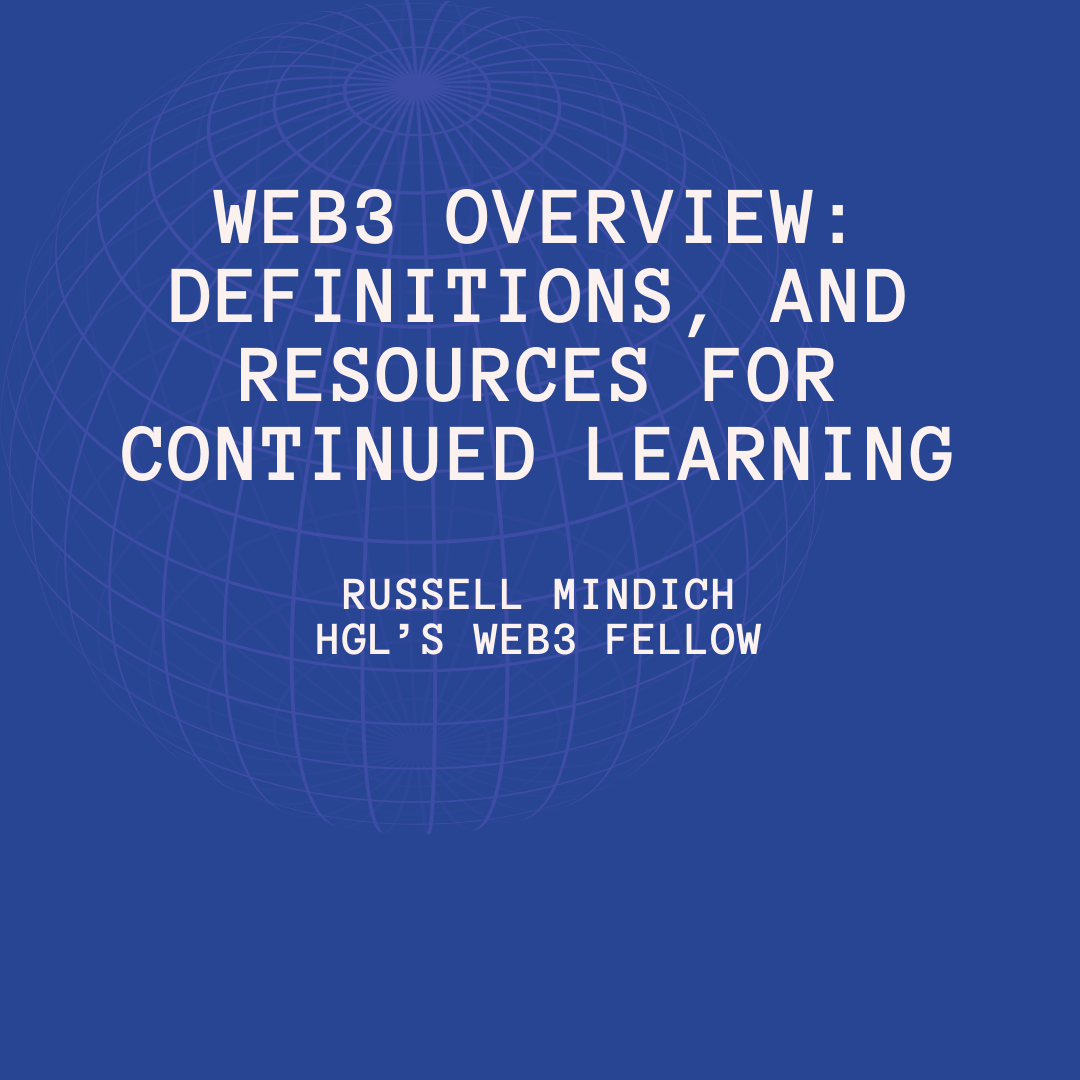This year, HGL committed to diving deeper into Web3. Our goal is to help educate the political technology community about Web3 and start to predict if and how it might change our work in the years to come. We reference this commitment in our 2022 investment theses. As one of the first steps in this journey, we brought on Russell Mindich as our Web3 Fellow. Russell has worked with HGL before – as a fellow for us several years ago. We are thrilled to have him back as a close part of the HGL family, exploring this growing technology landscape.
By: Russell Mindich, HGL Web3 Fellow
What is Web3, and why should the political tech community care?
Higher Ground Labs has always been committed to investing in technology that gives progressives an edge. As Web3 technologies and trends continue to gain steam and showcase ever-evolving use cases, we are eager to remain ahead of the curve and explore potential applications in our space. While Web3 technologies have demonstrated early promise for enhancing fundraising mechanisms, supporter engagement strategies, and distributed organizing tactics, there are many outstanding questions that we wish to answer.
As we begin to explore this emerging intersection, and as Web3 inches closer to mainstream adoption by campaigns, we want to define key terms and provide resources for our community to learn more.
***
Web3: The next iteration of the Internet, facilitated by blockchain technology. Web3 promotes decentralized applications, currencies, companies, and data practices; it transitions away from privately-owned platforms in favor of community-ownership.
Cryptocurrencies: Decentralized, digital currencies designed to facilitate transactions without the need for intermediaries. They are neither issued nor controlled by governments; instead, they are managed by P2P networks of computers that run free, open-source software.
- Coinbase Learn: What is cryptocurrency?
Blockchain: A distributed database that serves as a public ledger for all transactions associated with a specific cryptocurrency. Each cryptocurrency has their own blockchain, which represents a secure and permanent record of all network activity.
Stablecoins: Cryptocurrencies that pledge to be backed by a reserve asset, like the US Dollar, to ensure a stable price. They serve as an intermediary store of value and are designed to facilitate online transactions.
Decentralized Finance (DeFi): A new conception of the financial system. DeFi technologies and mechanics allow individuals to have more control over their assets (self-custody of funds) and enable transactions to occur without any intermediaries (decentralized, P2P cryptocurrency exchanges).
- CoinDesk: What is DeFi?
Non-Fungible Tokens (NFTs): Digital certificates of authenticity that clearly delineate ownership of a digital or physical asset. NFTs take the form of picture, video, and audio files that can be bought and sold using a cryptocurrency; they can represent digital or physical art, a membership pass to a community, an asset within a video game, and more.
Decentralized Autonomous Organizations (DAOs): Autonomous, transparent, Internet-native companies that allow individuals to pool capital and vote on community-driven proposals to decide how to deploy it, all without the need for a “leader”. They are groups of individuals bonded by a shared purpose, clear mandate, and collective financial interest. They operate via new Web3 technologies (smart contracts and governance tokens) that make community-governance easy, accessible, and transparent.
- Ethereum.org: Decentralized autonomous organizations
Metaverse: A virtual world designed to empower users to have experiences and interact with each other similar to how they would in the physical world. Metaverse platforms currently take the form of interactive websites that cultivate communities where digital identity is equally, or more important, to physical identity. These platforms enable users to build and monetize experiences (concert venues, boardrooms, shopping malls) on digital land and adopt avatars. A metaverse isn’t inherently a Web3 construct; there are many Web2-native platforms, such as Fortnite or Minecraft, that offer similar functionality without the use of blockchain technology.
Play-to-Earn: An incentive structure for players and a central concept to Blockchain gaming. Players are rewarded for achieving certain objectives in a video game with a native cryptocurrency. Players can then exchange this cryptocurrency for US Dollars by using a decentralized exchange, providing financial incentives for successfully playing a game.



